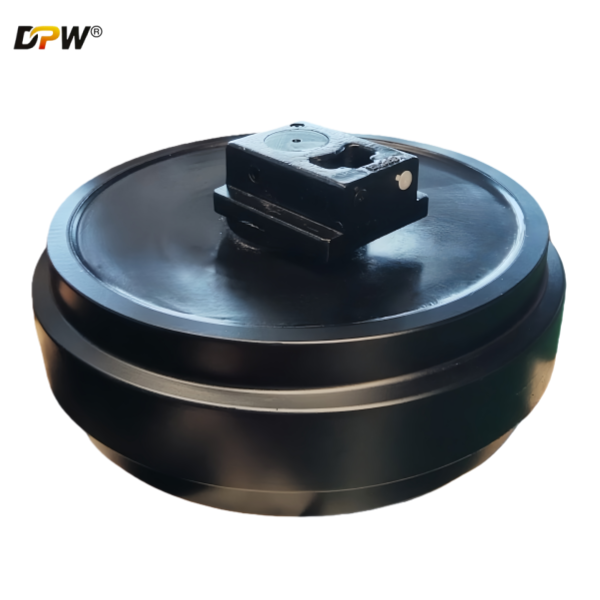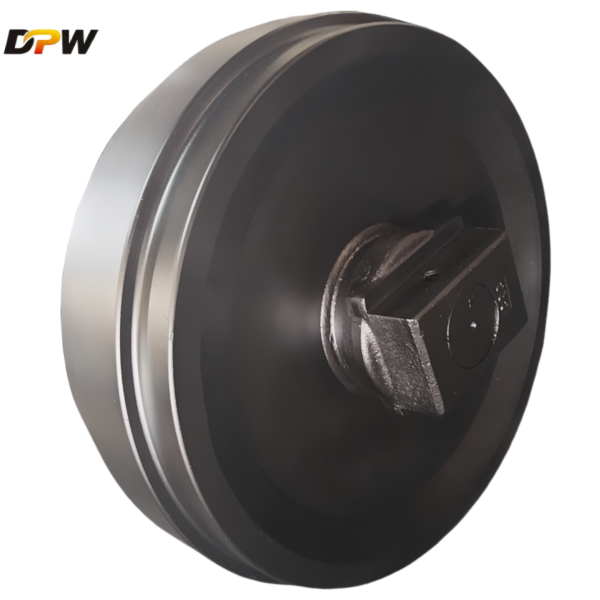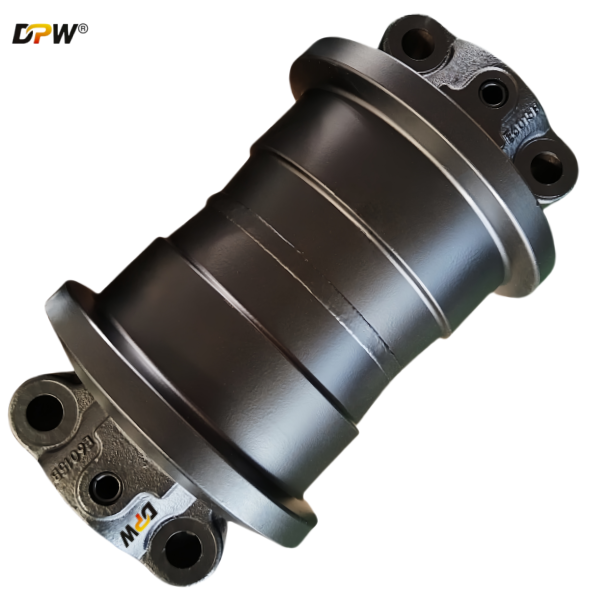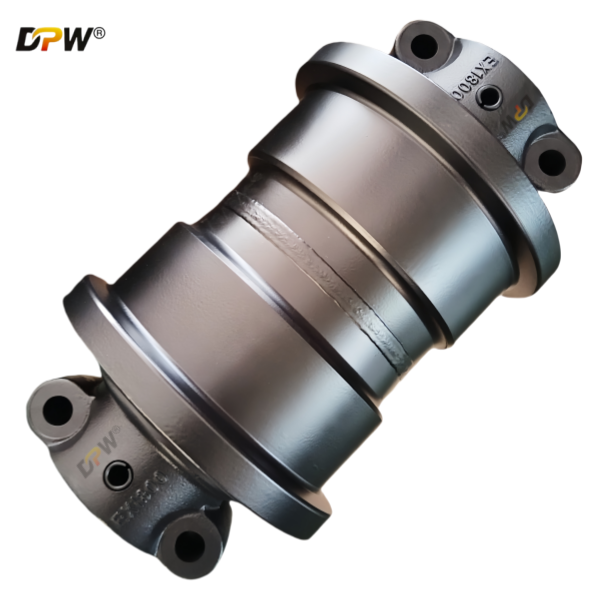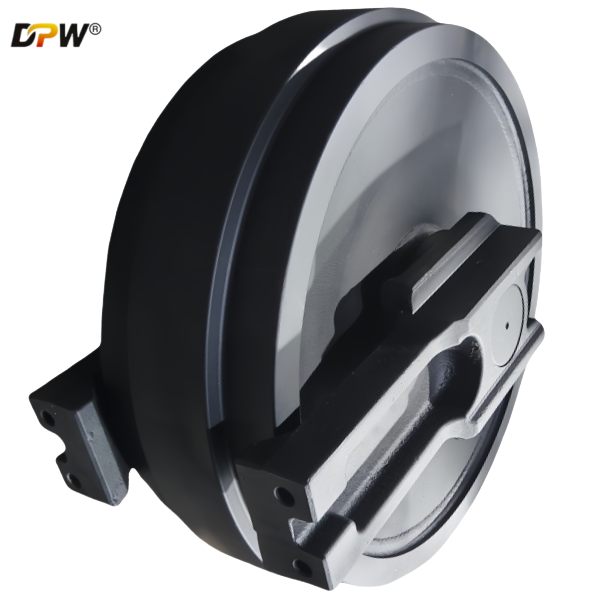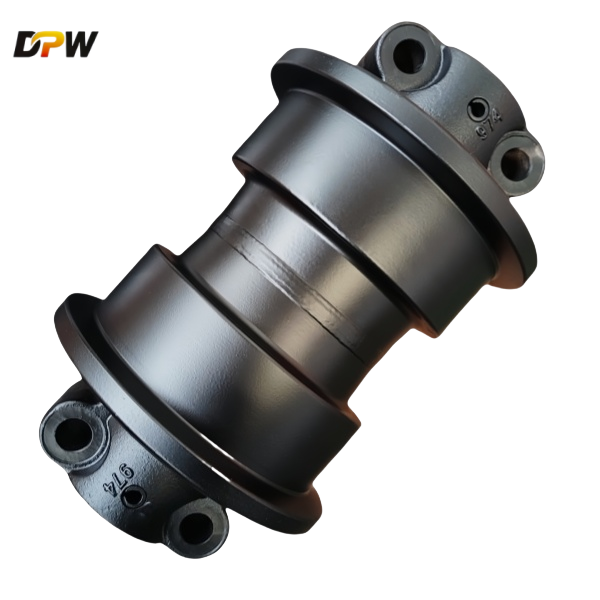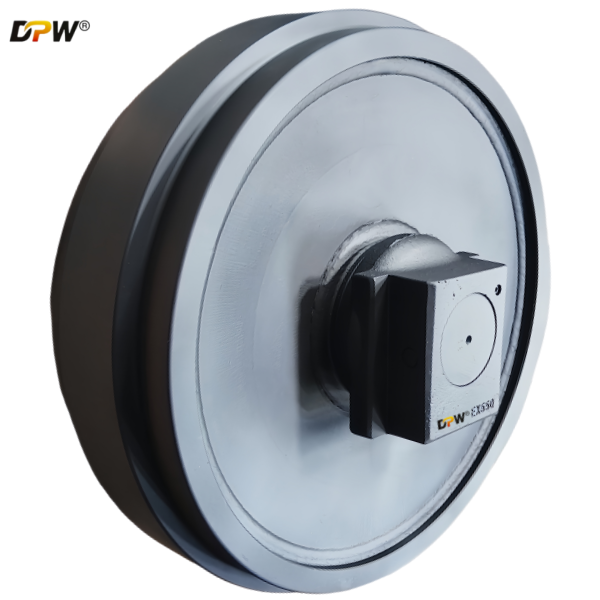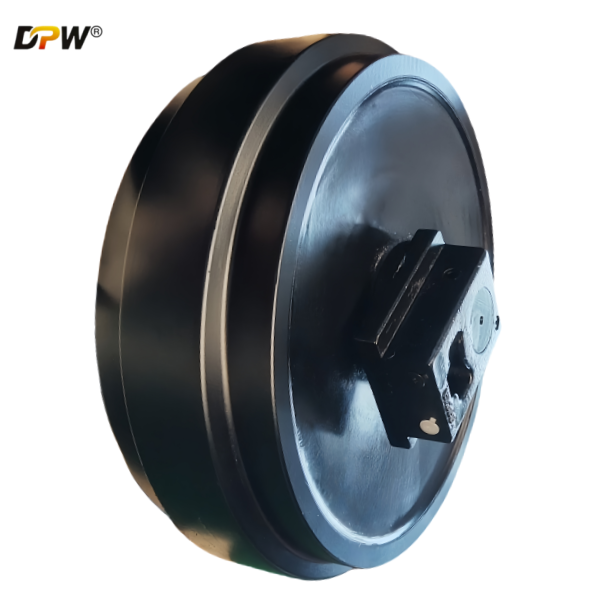
Hitachi 9151028/9097581 EX300-1/-2/-3 Idler Wheel Assembly/OEM quality chassis components supplier and manufacturer
Product Specifications
Technical Specification: Track Idler Wheel Assembly (Front Idler)
Part Identification:
Hitachi Part Numbers: 9151028, 9097581
Compatible Machine Models: Hitachi EX300-1, EX300-2, EX300-3 Hydraulic Excavators.
Application: Undercarriage System, Front Guide and Tensioning Mechanism.
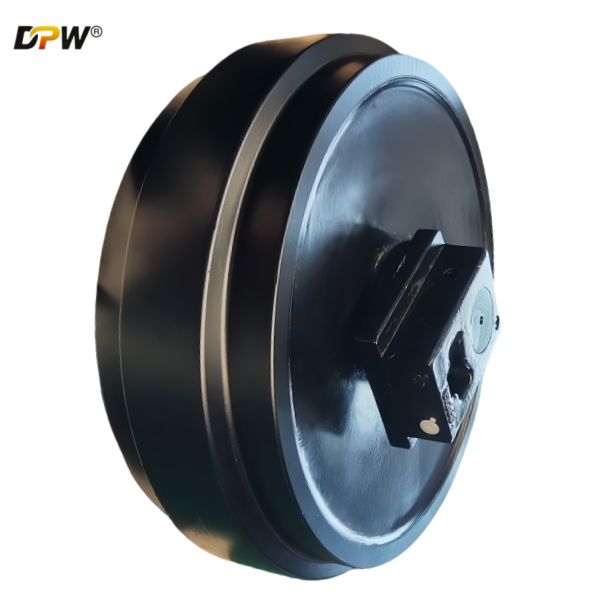
1.0 Component Overview
The Part Numbers 9151028/9097581 designate a Track Idler Wheel Assembly, commonly known as the Front Idler. This is a critical component located at the front of the excavator's undercarriage frame, opposite the drive sprocket. Its primary functions are to guide the track chain into a smooth, continuous loop and to provide the means for adjusting track tension. Unlike the drive sprocket, the idler is a passive, non-driven component, but it is subjected to significant impact and lateral forces.
2.0 Primary Function & Operational Context
The core engineering functions of this assembly are:
Track Guidance and Direction Control: It serves as the forward guide point for the track chain, reversing the direction of the track as it returns from the ground contact point and directing it towards the drive sprocket.
Track Tension Adjustment: The idler is not fixed; it is mounted on a sliding or pivoting mechanism that can be adjusted forward or backward via a grease-filled tensioning cylinder (track tensioner). This adjustment is crucial for setting the correct amount of track sag, which is vital for optimal performance and service life.
Impact Absorption: The idler is often the first undercarriage component to encounter obstacles such as rocks, stumps, and curbs. It is therefore designed to absorb and dissipate substantial shock loads.
Track Alignment: It works in concert with the sprocket and rollers to maintain the longitudinal alignment of the track chain.
3.0 Detailed Construction & Key Sub-Components
A Track Idler Wheel Assembly is a robust, sealed mechanism typically consisting of:
3.1 Idler Wheel (Rim): A large-diameter, smooth, or slightly contoured wheel. Its wide profile helps to stabilize the track chain.
3.2 Flanges: Integrated lateral guides on one or both sides of the rim. These flanges are essential for preventing the track chain from derailing laterally during turning and side-slope operation.
3.3 Shaft and Bushing/Bearing System:
Shaft: A hardened steel shaft that serves as the stationary axle.
Bearing/Bushing: The idler housing rotates around the shaft on a set of heavy-duty tapered roller bearings or bronze bushings, chosen for their ability to handle high radial and axial (thrust) loads.
3.4 Sealing System: A critical multi-component, labyrinth-style seal, often incorporating a radial face seal and external dust lip. This system is paramount for excluding abrasive contaminants (e.g., mud, sand, slurry) and retaining grease within the bearing cavity, directly determining the assembly's service life.
3.5 Mounting Bracket and Tensioning Interface: The assembly includes the necessary brackets and sleeves that interface with the undercarriage frame's sliding guides and the push-rod of the track tensioning cylinder.
4.0 Material & Performance Specifications
Material: High-Carbon or Alloy Steel Casting/Forging.
Hardness: The rim and flange contact surfaces are through-hardened or induction-hardened to a typical hardness of 55-60 HRC to resist impact deformation and abrasive wear.
Lubrication: Pre-filled with high-temperature, extreme-pressure (EP) grease. Many idlers are equipped with a grease fitting for periodic re-lubrication to help purge any ingested contaminants and extend service intervals.
5.0 Failure Modes & Maintenance Considerations
Wear Limits: Serviceability is determined by measuring the reduction in flange height and rim diameter against OEM-specified wear limits. Severely worn flanges dramatically increase the risk of track derailment.
Common Failure Modes:
Flange Wear and Damage: Flanges can wear thin, crack, or break off entirely due to repeated impacts and side loading.
Rim Wear and Grooving: The rim can develop a concave wear pattern or deep grooves from friction with the track chain links.
Bearing Seizure or Excessive Play: Caused by seal failure, leading to lubricant contamination. A seized idler will not rotate, causing rapid, severe wear to the track chain links and the idler itself.
Damage from Impact: The front-facing position makes it susceptible to direct impact damage, such as cracking or bending.
Maintenance Practice: Regular inspection for rotation (must turn freely), visible damage, and excessive lateral play is essential. Track tension should be checked and adjusted regularly according to the manufacturer's specifications. Over-tensioning places extreme stress on the idler bearings and the entire undercarriage, while under-tensioning can cause whipping and derailment.

